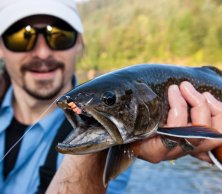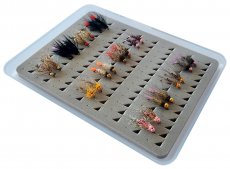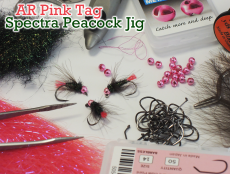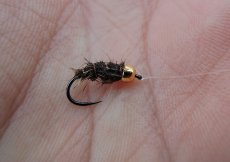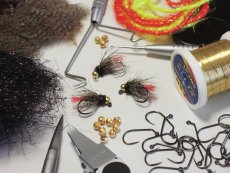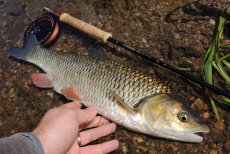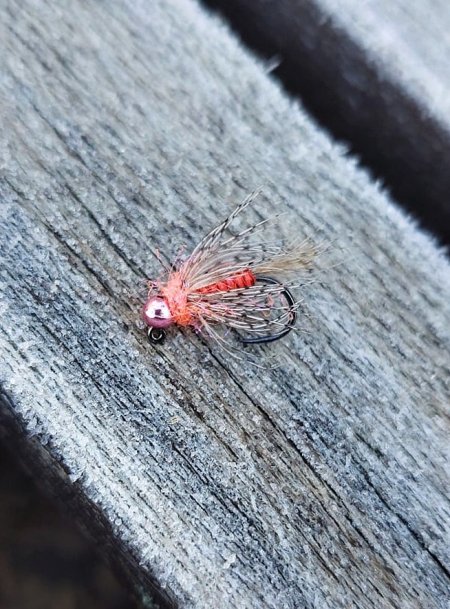Don't miss the next episode of the popular "At The Vice" series. This time I chose my "wet/nymph" pattern, which looks a bit toxic at first look, but it is all the more effective when fishing for coarse and salmonid fish, both in rivers and still waters! A brief and clear description of the use of this original fly, the material used and the individual "Step By Step" tying procedure!
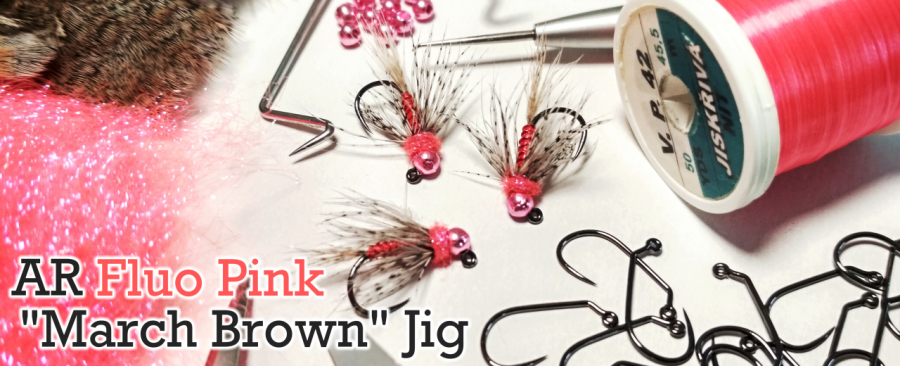
Flies tuned to pink shades have always been mainly associated with one fly fishing purpose, and that is autumn grayling fishing! Over time and together with the more frequent stocking of rainbow trout in our waters, their use has also expanded when fishing for this non-native salmonid fish, both in rivers and in still waters. Of course, this main use of pink flies still applies, but perhaps less of you know that pink colored patterns are also very effective for catching coarse fish such as chub, dace, ide, roach, bream and vimba bream!
And even though this color - especially in fluo colors - is very expressive, native fish have no major problems with it, and according to my experience, I can say that such "unnaturally" tuned flies (in the colors pink, purple, blue, etc.) are very effective even in the late autumn and winter months from the end of November to February, when there is not as much natural food in the water as in spring and summer, and for fish such flies are less suspicious than naturally tuned patterns that should perhaps imitate fish natural food from the period of its great abundance. So let's focus on the overall use of this particular pink fly.
MAIN USE: The AR Fluo Pink "March Brown" Jig belongs to the group of my favorite pseudo wet/nymph flies, which are not necessarily tied to a jig hook, but - in combination with a small tungsten bead - that gives them that modern nymph face, while the rest of the fly is in the wet fly concept. Overall, such a pattern sinks very slowly through the water column, it is possible to fish with classically "wet way" with a floating, hover or slow intermediate line, but also to nymph against the water with a French leader, etc. This particular pattern + others similarly tuned you can find flies in my ready-made fly selection called TOP AR Special Chub Flies, with which you will never go wrong when targeting large chubs on coarse waters!
Personally, my fly fishing with the AR Fluo Pink "March" Jig is divided according to fishing styles as follows:
1) Fishing for coarse fish (chub, roach, bream, vimba bream...) on non-trout waters in the classic wet way accross the stream using a fly rod category 3 - 5wt (depending on the size of the river and the fish being fished) mostly with a hover fly line that is on in larger rivers, better than floating, which affects the course of flies more depending on the speed of the current - it drags them faster and the fish do not have time to take them.
2a) Fishing for salmonid fish (mainly grayling & rainbow trout) on smaller trout streams against the water (upstream nymphing) using a light and short fly rod category 2 - 3wt, classically with a floating line and a tapered leader, when I usually have only one point fly with which I "probe" each a solid stream or a promising-looking pool.
2b) Fishing for all types of active river fish (coarse & salmonid fish) on rivers of all sizes with modern European nymphing techniques using a long nymph rod category 2 - 5wt (depending on the size of the stream and the fish being caught) with a French leader and 2 - 3 flies on the leader. As you can already see from the description, this is a very universal and today much popular style of fishing, which I myself do not practice, because for me it lacks the true charm of the original concept of fly fishing.
3) Fishing for salmonid fish (rainbow & brook trout) on private trout still waters, mainly with a static method of fishing with an indicator (BUNG/Dry-Dropper) using a fly rod of category 5 - 7wt with a floating line, which I personally go to only at the "last breath" and prefer - with a slight change in the concept of the fly (classic wet hook + not necessarily TG head) more interesting, unfortunately nowadays - compared to the method described above - not so effective classic stillwater fly fishing with long casts using a floating, hover or intermediate line, when we attract after casting /we retrieve flies in the water with slow figure eights and other methods of active management.
FLY TYING MATERIALS:
Hook: Fly Tying Hook Fulling Mill Jig Force BL - my favorite jig hook with excellent strength and sharpness of the eagle claw tip that points inside the arc! It's probably no secret that I tie my flies almost exclusively on Fulling Mill hooks, so if anyone wants to try them out, they can read my Guide To Fulling Mill Fly Tying Hooks. Head: Tungsten Beads Hanak Competition Metallic+ Pink Light or Tungsten Beads Knapek Hooks METALLIC Light Pink - generally a very popular color. I use the 2.5mm size most often for this pattern. I want the head to be smaller and the fly to give the impression of a wet fly rather than tungsten nymphs with a large head. Tip/Tail: English Partridge Veniard Grey Neck Hackles Natural & Dyed or English Partridge Tommi-Fly Grizzly Plumage - a few sprigs of speckled partridge feathers will serve perfectly as an imitation of articulated tail. Body: Tying Thread Hends UV Neon - a thin body in fluo pink color, which can still be varnished with classic or UV glue before ribbing. Ribbing: Color Wire Hends - Distinctive ribbing with red wire. Hackles: English Partridge Veniard Grey Neck Hackles Natural & Dyed or English Partridge Tommi-Fly Grizzly Plumage - thanks to this material the name "March Brown" was born, even though it does not look like a march brown mayfly nymph at all, but English partridge is probably the most important tying material of all flies referred to as March Brown. Thorax: Microflash Dubbing Hends or Microflash Spectra Dubbing Tommi-Fly - a small and subsequently combed glittery circle between the head and hackles.
FLY TYING PROCEDURE:
STEP 1: We thread a tungsten head with a diameter of 2.5 mm onto a size 12 jig hook and clamp it firmly in the jaws of the fly tying vice in its bend.
STEP 2: Drop a small amount of super glue between the eye of the hook and the tungsten bead to ensure good fixation of the head. This step is probably omitted by many tyers, but I certainly do not, because the unglued head moves after the material is wet and there is a risk of loosening, for example, a poorly painted end of the thread, which leads to the quick unraveling of the entire fly.
STEP 3: We coat the arm of the hook with varnish and at the end of the bow we attach a fluo pink tying thread, which we fix with several wraps in varnish all over the shank and tie a small bundle of sprigs from a mottled partridge feather. The tail should correspond to the maximum length of the arm of a classic jig hook. Also, be careful not to use too much. The fly should be generally airy - well mobile in the water.
STEP 4: Next, we attach the red ribbing wire and use the thread to create a thin pink body of the fly, which can be varnished before ribbing and then immediately cured with a thin UV varnish.
STEP 5: We tightly rib the body created in this way with a red wire, which we fix with a thread at thorax level and cut off the rest of it.
STEP 6: We choose a nice partridge feather with twigs of the appropriate length, attach it to the arm and 2-3 feather wraps create a garland of speckled fly hackles. We tie the rest of the feather with a thread and cut it off.
STEP 7: We dub a small amount of pink microflash on the thread and create a small glittery thorax/collar between the head and the hackles with a few wraps.
STEP 8: We finish the fly between the head and this collar with a few lost knots, cut the thread, varnish it and in the last step lightly comb the thorax and hackles with a special brush or Velcro! The fly is done with this step - resting in the fly box and ready for action!
I wish all passionate tyers a relaxing time at the tying vise and many wonderful experiences on the water this year's fishing season! Aleš 🎣🍀







